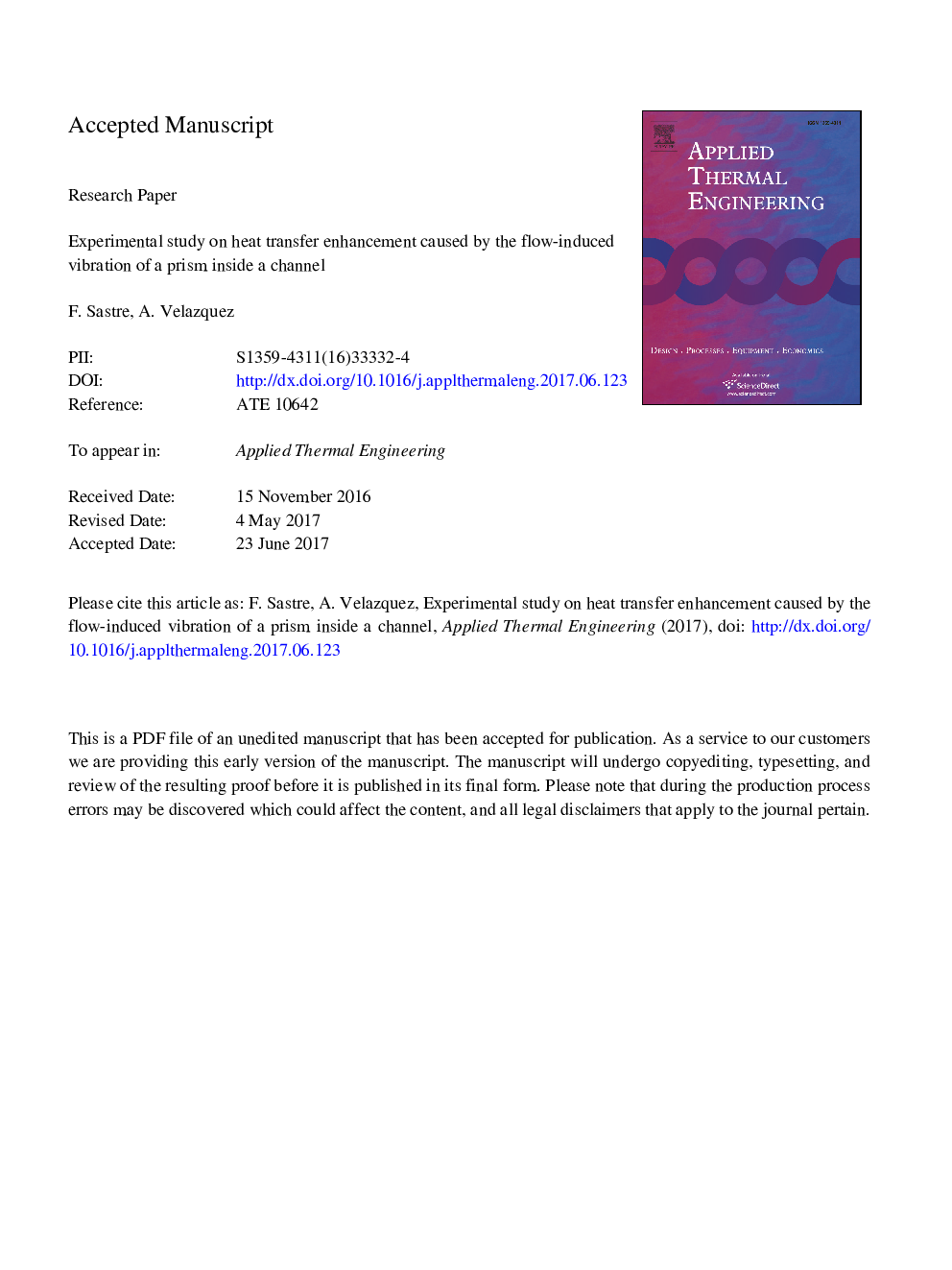| کد مقاله | کد نشریه | سال انتشار | مقاله انگلیسی | نسخه تمام متن |
|---|---|---|---|---|
| 4991197 | 1457104 | 2017 | 49 صفحه PDF | دانلود رایگان |
عنوان انگلیسی مقاله ISI
Experimental study on heat transfer enhancement caused by the flow-induced vibration of a prism inside a channel
ترجمه فارسی عنوان
مطالعه تجربی بر افزایش انتقال حرارت ناشی از لرزش ناشی از جریان یک منشور در داخل یک کانال
دانلود مقاله + سفارش ترجمه
دانلود مقاله ISI انگلیسی
رایگان برای ایرانیان
کلمات کلیدی
افزایش انتقال حرارت، جریان انحصاری محدود سیستم منفعل، جریان القایی ارتعاشات،
موضوعات مرتبط
مهندسی و علوم پایه
مهندسی شیمی
جریان سیال و فرایندهای انتقال
چکیده انگلیسی
An experimental study, using water as the working fluid, has been performed to analyze whether a passive system based on flow-induced vibration is a feasible option to enhance heat transfer in the laminar confined regime. The experimental setup consisted of a 1.5 m tall vertical channel manufactured on methacrylate (square cross-section of 25 mm Ã 25 mm) and a tethered square section buoyant prism (10 mm Ã 10 mm Ã 25 mm) placed inside the channel. The tethered prism was allowed to move freely (like an inverted pendulum) as a consequence of its interaction with the incoming flow. An aluminum block placed in the channel walls around the prism heated the water with a constant wall temperature of 60 C. The flow Reynolds number (Re) based on the prism cross section length was varied between 80 and 800. Three prisms with three different prism-to-water density ratios (mâ) were used in the experiments: 0.56, 0.70 and 0.91. The case with the prism anchored to the walls was considered also. Regarding heat transfer, all cases were compared to the reference case which consisted of the clean channel with no prism present. The flow velocity was characterized using a Particle Image Velocimetry System. The electric power supply to the heated walls was recorded and the spatial distribution of water temperature was measured in a transversal plane downstream of the heated walls. It was found that the heat transfer enhancement provided by this system, as compared to the clean channel with no prism present, was very much dependent on Re. For example, at the lowest Re 80, the improvement on the Nusselt number (Nu) was negligible for all cases. At highest Re 800, the improvement on Nu was 100% for the case of prism-to-water density ratio of 0.91, and 66% for the case of the prism anchored to the walls. This suggests that, when thinking of practical engineering applications, passive systems based on flow-induced vibration might represent a feasible alternative, because of its simplicity, to active systems that require a more complex implementation that includes a motor to move the prism. The simplest setup (the prism anchored to the walls) also yields a significant, if smaller, heat transfer enhancement.
ناشر
Database: Elsevier - ScienceDirect (ساینس دایرکت)
Journal: Applied Thermal Engineering - Volume 125, October 2017, Pages 412-424
Journal: Applied Thermal Engineering - Volume 125, October 2017, Pages 412-424
نویسندگان
F. Sastre, A. Velazquez,
